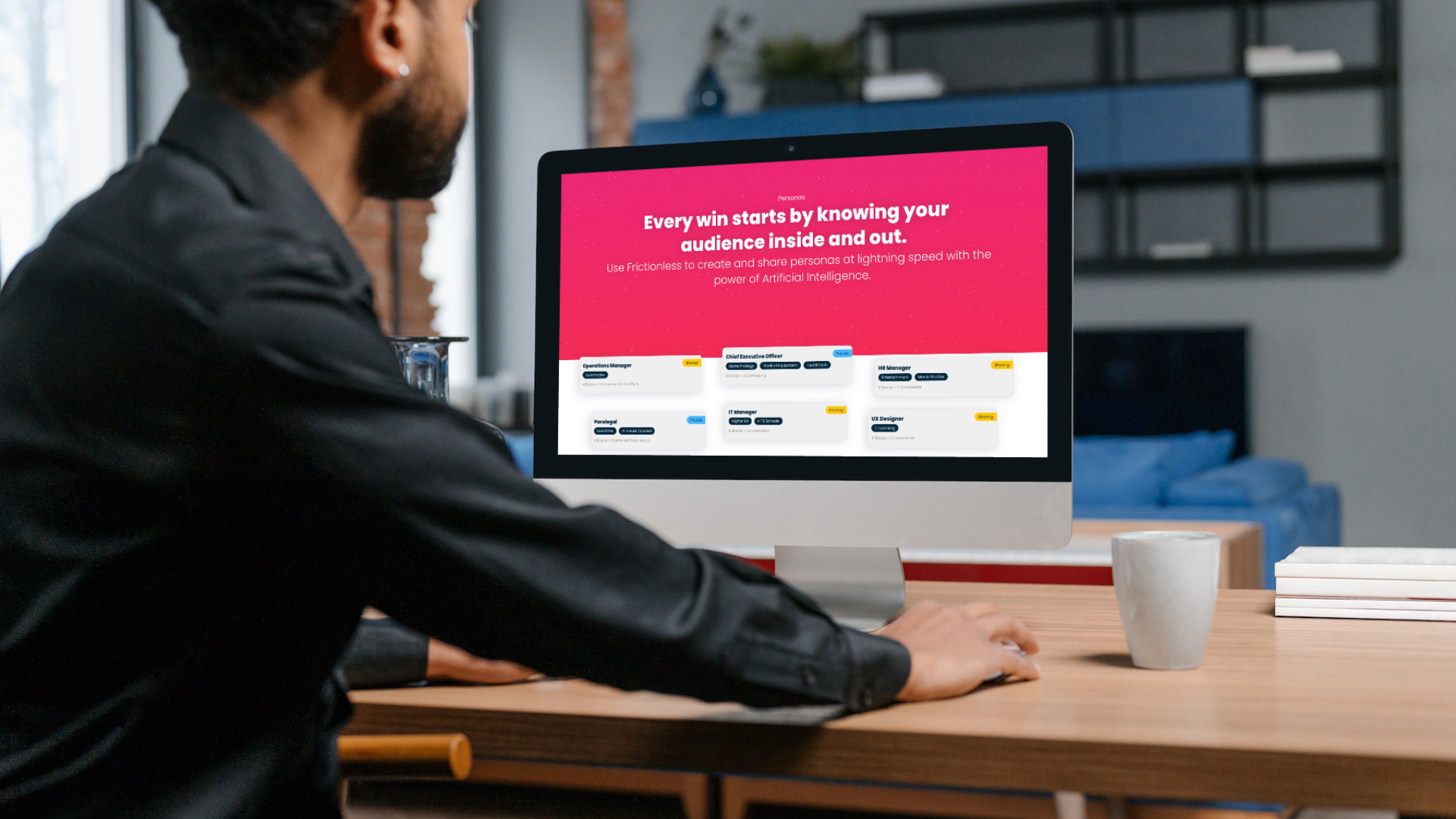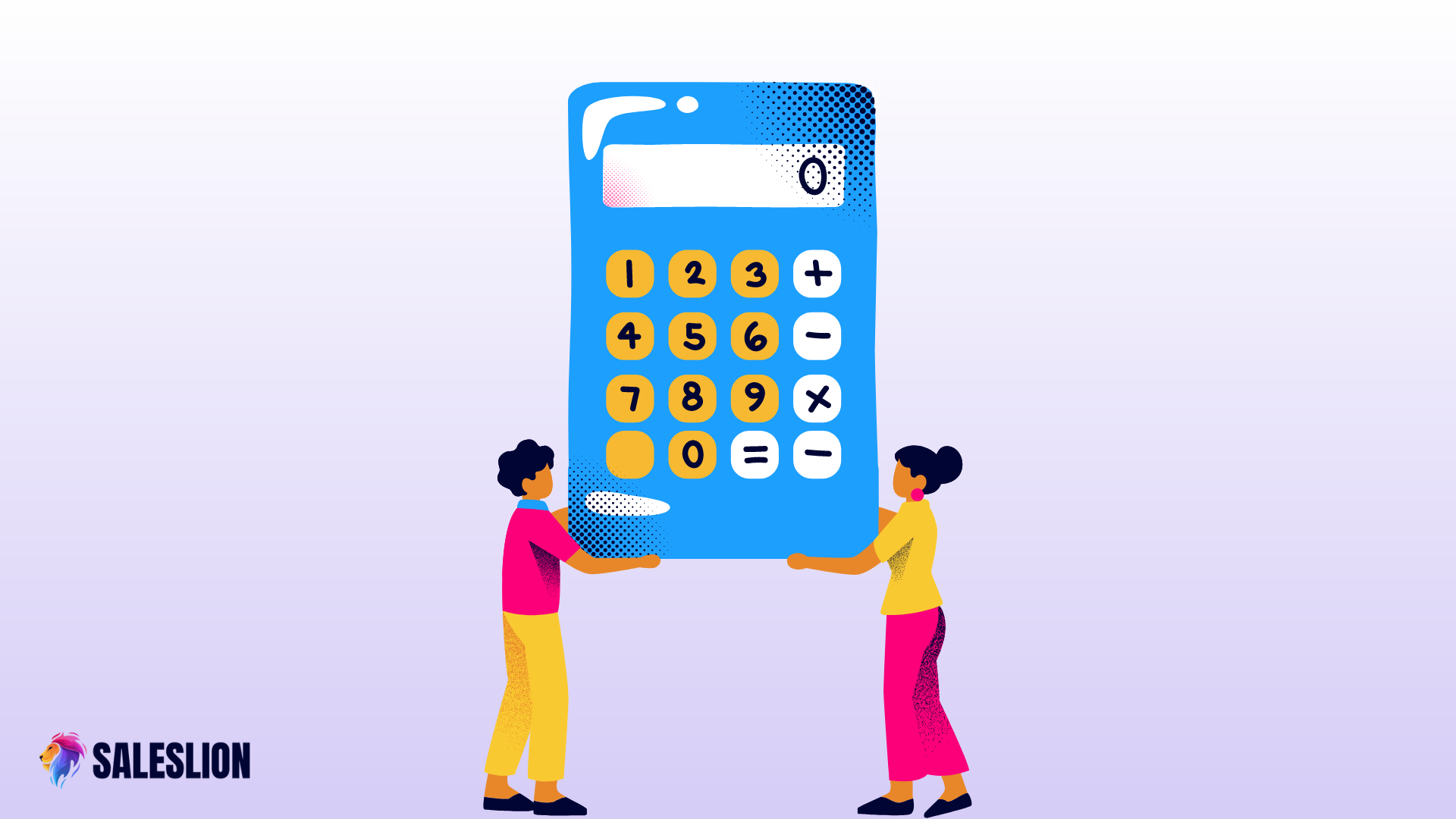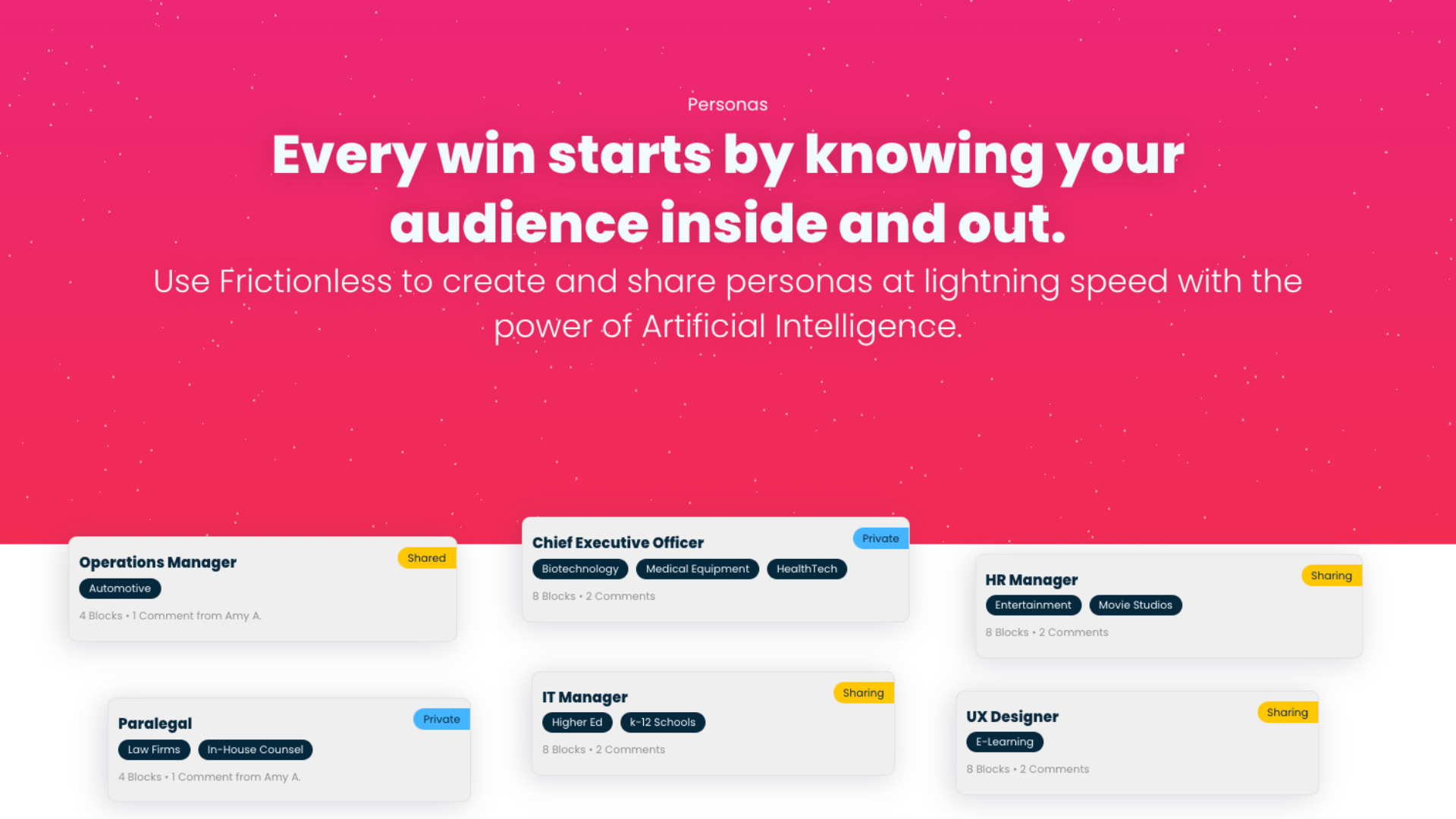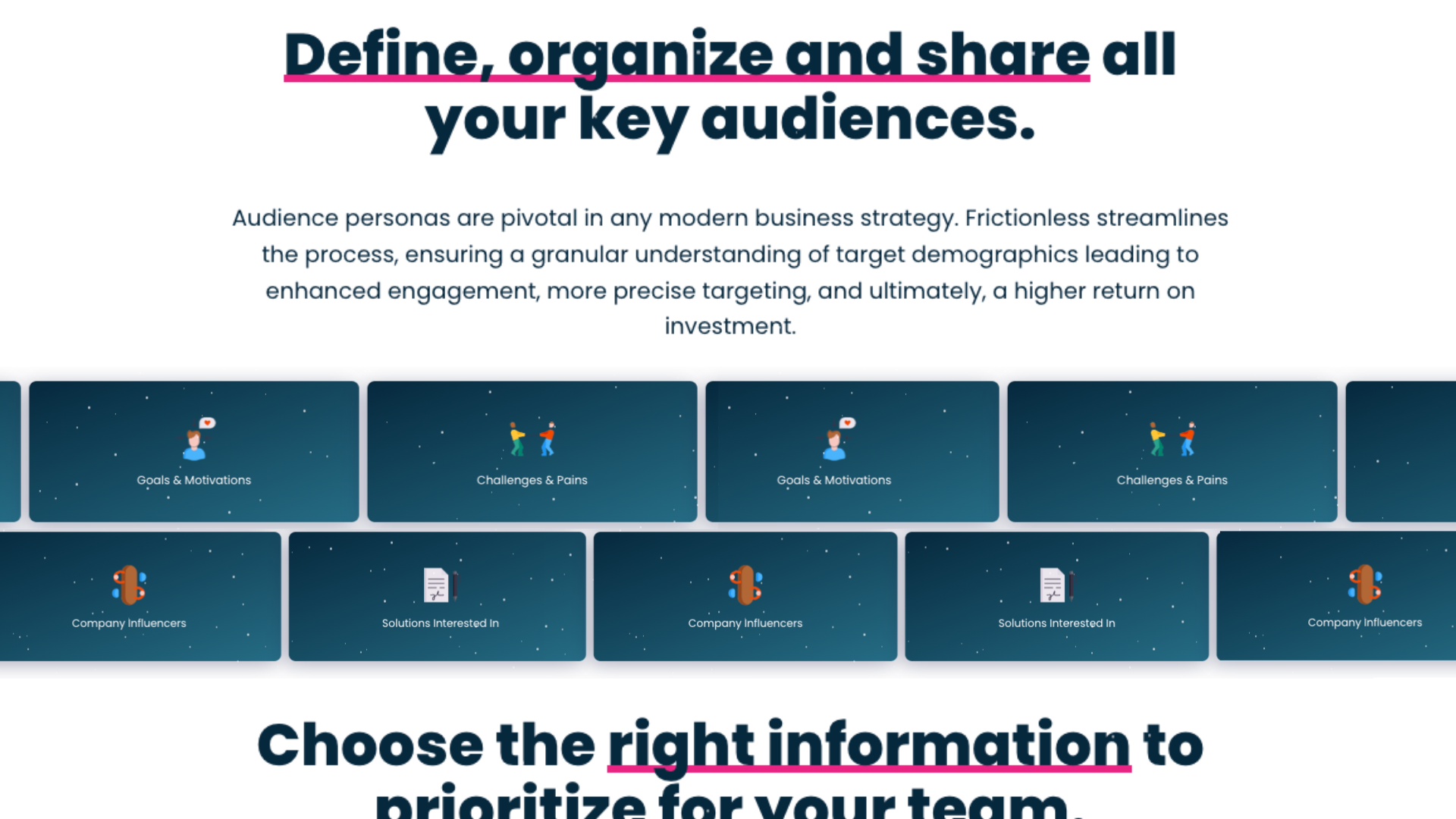7 Tips to Improve Your B2B Product Page Conversions

The B2B product page plays a significant role in your conversion rates. For this reason, the product page is one of the first things that need your attention when optimizing your website for sales.
You may have the most attractive LinkedIn ads, the smoothest proposal stages, and the best products, but neglecting this critical aspect can result in a plethora of incomplete B2B sales processes or lost leads. To inspire sales, you need to approach your product page with strategy.
Everything on the page needs to be intentional.
From the images to the words, every element on the page needs to encourage customers to convert. Improving your product page and increasing conversions should sit atop your priority list.
Below are seven product page tips that will help you optimize your B2B sales process for conversions.
In this Article...
- 1. Zero In On Your Value Proposition
- 2. Upload High-Quality Product Images and Videos
- 3. Add Trust Badges And Awards
- 4. Leverage Psychology
- 5. Include Customer Reviews on the Product Page
- 6. Remove the Clutter
- 7. Use FAQs to Educate the Consumer and Overcome Objection
- Product Pages Play a Significant Role in B2B Conversions
1. Zero in on Your Value Proposition
If you don’t know what makes you special, your customers definitely won’t know.
Zeroing in on your specific value proposition is a crucial part of boosting conversion rates
Every visitor visits your B2B company’s website because they need help with a problem. Whether the visitor is looking for a way to work better, feel better, or become more productive, it is your job to solve the problem.
Prioritize your value proposition. Make sure that the consumers can quickly grasp the value that you offer.

When designing your value proposition, ask yourself the following questions:
- Who are your ideal customers?
- What are they looking for?
- How can my solution help them?
- What benefits do consumers enjoy while using my products?
- What does my solution change in their lives?
- What is the result that our customers are looking for?
- What promises am I making to the people that are buying my products?
The proposition should join the conversation that is ongoing in the customer's mind. By matching this language, you can better communicate with and convert prospects.
2. Upload High-Quality Product Images and Videos
To convince a customer to buy your products, you need to show them how good your products look.
Recent studies show that humans process visuals 60,000 times faster than text. What better way to convey this message than through images and videos?
The best way to build trust on your product page is by uploading large, crisp, and interactive images and videos. Take advantage of this opportunity to stand out from your competition by providing visual ways for your prospects to learn more about the solution you offer.
Product images, videos, and product tours matter a great deal when it comes to persuading buyers to make a purchase. Investing in high-quality product images or simple demos can be an excellent way to optimize your product page and B2B sales process for conversions.

Excellent product visuals yield a multitude of benefits for businesses. Firstly, they play a pivotal role in building trust and effectively overcoming objections, as customers can visually assess the quality and features of the products.
Additionally, these visuals contribute to creating a lasting and positive first impression, shaping customer expectations in a favorable light. Furthermore, investing in compelling product visuals enhances the likelihood of social sharing, expanding the reach of your products through digital networks.
Consistency in brand representation is achieved through visually cohesive elements, reinforcing the brand's identity across various platforms. Ultimately, incorporating outstanding product visuals into your strategy allows your brand to stand out from the competition, positioning it as a distinguished and compelling choice in the market.
3. Add Trust Badges And Awards
The internet is an incredibly useful tool. It allows us to communicate with people around the world, sell things online from the comfort of our homes, be entertained wherever we go, and so much more.
But while the internet is helpful, it also can create moments of vulnerability.
Because it is becoming increasingly easy to create new products and kickstart new businesses, the B2B landscape is becoming more and more saturated. While the internet can help you be found by prospects all over the world, you can just as quickly get lost in the crowd.
So how can you design a B2B sales process that stands apart from the crowd in such a dense and competitive B2B world?
Through badges and awards that demonstrate your credibility.
G2 is a popular platform that allows users to leave feedback and provide ratings on companies’ products and services.
Badges and awards from platforms like G2 hold significant importance for B2B companies looking to enhance their B2B sales process and conversions. These accolades serve as powerful trust signals, providing tangible evidence of a company's excellence and customer satisfaction.
By prominently displaying these badges on your product pages, your B2B company will signal to potential clients that your offerings have been recognized and validated by real users and industry experts.
This external validation not only instills confidence in prospective buyers but also distinguishes you as an industry leader or high performer in your respective market.
Especially in the competitive digital landscape, these badges function as a form of social proof, influencing decision-makers and facilitating a quicker and more positive purchasing experience. They contribute to building credibility, reducing skepticism, and ultimately playing a crucial role in steering potential clients toward conversion.
4. Leverage Psychology
Product page optimization often boils down to one thing: psychology.
The most effective B2B sales professionals understand this concept. You need to familiarize yourself with the psychological principles that are most effective at promoting sales during the B2B sales process.
Leveraging sales psychology in the optimization of B2B product pages is paramount as it taps into the intricacies of human decision-making and can significantly impact conversion rates. Understanding the psychological principles behind buyer behavior allows B2B professionals to strategically present information in ways that resonate with potential clients.

As pricing can be one of the most impactful pieces of information on your product page, you also need to incorporate pricing psychology strategies to influence prospect decision-making.
- Anchor Pricing: This strategy involves presenting a higher-priced option as a reference point or "anchor" for other options. By establishing a context with a premium offering, the perceived value of other, slightly less expensive choices increases, making them more appealing.
- Charm Pricing: This classic psychological tactic involves pricing products just below a round number, such as $9.99 instead of $10.00. The left-digit effect makes the price seem significantly lower to consumers, enhancing the perceived value and encouraging purchases.
- Odd-Even Pricing: This technique involves using odd numbers for less expensive items and even numbers for pricier ones. Odd prices are perceived as friendlier and more approachable, while even prices convey a sense of quality and sophistication.
- Decoy Pricing: Introducing a third, less attractive option (decoy) can influence customers to choose a more expensive option that appears more favorable in comparison. This decoy creates a reference point that makes other options seem more reasonable.
- Center Stage Pricing: Placing a product with average features and pricing it in the middle of a product lineup can make other options seem more attractive. This strategy capitalizes on the contrast effect, where options on the extremes appear more distinct.
In a competitive landscape, where differentiation is key, the application of sales psychology not only optimizes product pages for conversions but also positions your B2B company to stand out by catering to the nuanced psychological needs of its customer base.
5. Include Customer Reviews on the Product Page
Just like trust awards and badges from platforms like G2 can showcase your industry credibility, customer reviews can help build trust with potential customers.
You can spend your entire budget blowing your own trumpet on Facebook, Google, or other advertising platforms, but none of these options are as effective-of-mouth recommendations and referrals.
Customer referrals account for nearly 50% of new leads. This shows that creating positive relationships with customers can pay off in the long run.
Displaying reviews can increase your conversion rate by a whopping 270%. About 72% of customers do not make a purchasing decision until they have read the relevant reviews. Almost 84% of consumers trust the reviews that they read online.
Displaying product reviews from customers who have used your products builds trust between potential customers and your brand. This trust is crucial in persuading the target to make a purchase.
Focus less on optimizing your product statements and leverage the statements from your local customers, brand advocates, and most recent customers.
6. Remove the Clutter
It takes too much effort to bring a customer to a specific product page. You want your potential buyer to remain focused on adding the item to his/her cart. Removing potential distractions from your product page design helps potential buyers maintain focus on the product. Such adjustments increase conversion rates.
Include only product-relevant information, including clear images and essential product details. Utilize negative spaces and remain intentional with typography, CTA buttons, and product copy. Keep your product page as simple as possible.
Below is an example of an effective product page:

The product is relevant, the purpose is clear, and the descriptions are intentional.

By creating a clutter-free product page you can set the rest of your B2B sales process up for success
7. Use FAQs to Educate the Consumer and Overcome Objection
Sometimes, your site will attract curious web browsers looking for information about specific products. By providing the information that these curious cats are looking for, you can make some conversions.
To sell products to today's consumers, you need to solve their problems. As a service provider, you need to convince the consumer that your services are the solution to their problems.
FAQs give you the best platform to demystify your products and services. Through the platform, you can answer the questions that site visitors are likely to ask.
Attach a product-relevant FAQ section on your product page. You can place it below the fold or in a lightbox or drop-down menu.
Common product questions include:
- What makes your product different from the competition?
- Is there support during the onboarding phase?
- Can your product or service be personalized?
- Do you offer a free trial or a freemium subscription plan?
Taking the time to inform and educate website visitors will allow you to address and dismiss any objections. As a result, you will be able to push your prospective buyers closer and closer to conversion.
Product Pages Play a Significant Role in B2B Conversions
It takes a lot of effort and money to bring a potential buyer to your product page. That is a lot of heavy lifting and hard work.
The product page is not the place to squander all this hard work. It is upon you, the sales rep, to create a conducive user experience that compels a visitor to become a customer.
Is there a right or wrong way to create a product page that converts?
No, it takes a lot of trial and error to find the right ingredients.
With the seven tips above, you can take the guesswork out of the equation and make some conversions.
To learn more about how to improve your conversions in your B2B sales process, reach out to us today.
Ready to reinvent your sales process and tools?
One quick call and we'll share our approach - no pressure.
Schedule your demo